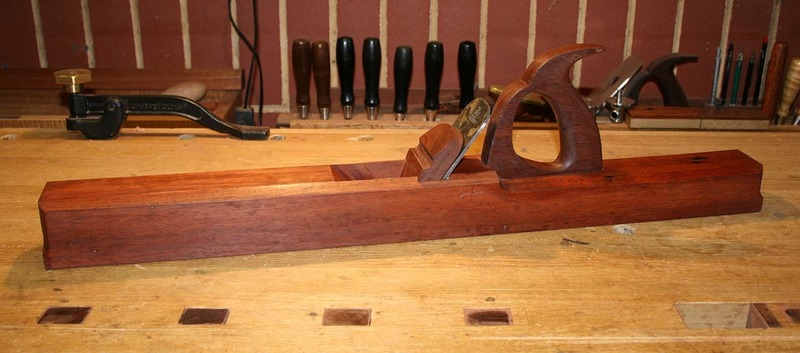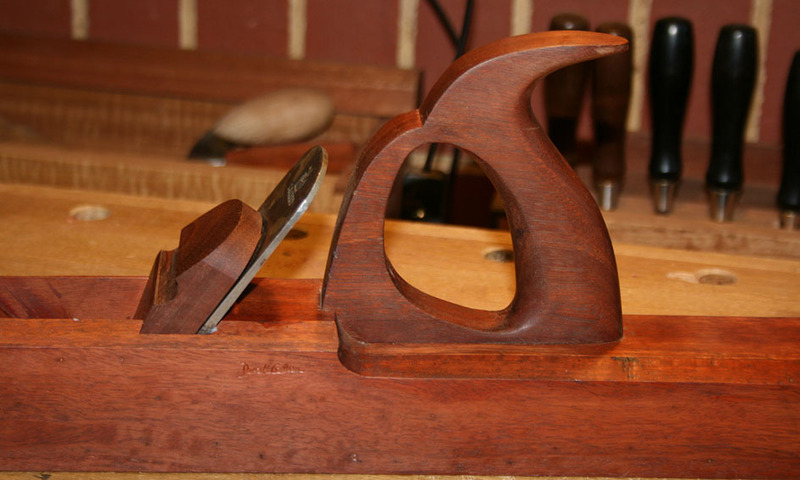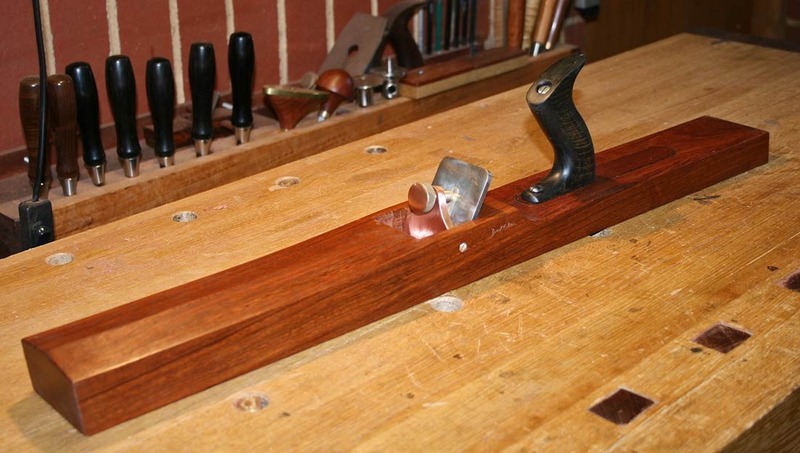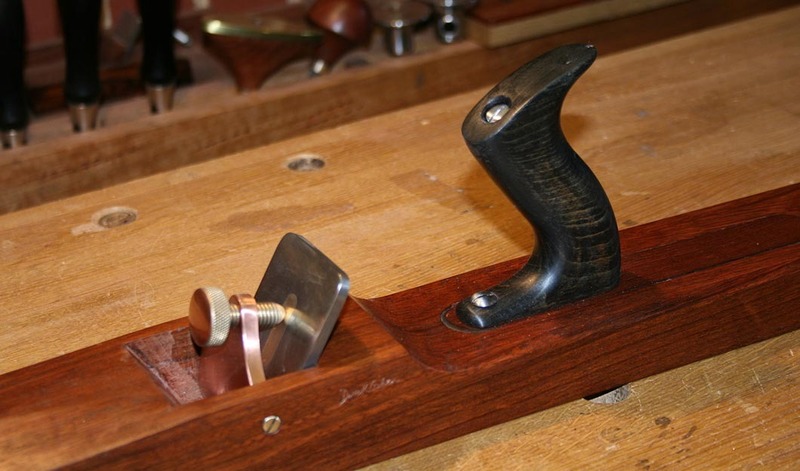Oskar Sedell
Established Member
Hi all,
I have a 60 mm wide double iron, and I´m about to make myself a 24'' Try Plane. Sadly, my biggest dry beech billet is just barely wide enough, and I´m not sure if it will be wide enough after cleaning up the sawn sides.
Plane maker Steve Voigt builds his bench planes with a finished width of 5/8'' wider than the iron. Is this the lower limit, or could one get away with less than this?
I would be interested in what the case is for old wooden bench planes. Since I don´t have a "reference library" of wooden planes, maybe some of you could contribute measures of your planes? Either iron width (at the mouth) and total width, or the abutment wall thickness (the thickness of the wood left and right of the iron).
best regards from Germany,
Oskar
I have a 60 mm wide double iron, and I´m about to make myself a 24'' Try Plane. Sadly, my biggest dry beech billet is just barely wide enough, and I´m not sure if it will be wide enough after cleaning up the sawn sides.
Plane maker Steve Voigt builds his bench planes with a finished width of 5/8'' wider than the iron. Is this the lower limit, or could one get away with less than this?
I would be interested in what the case is for old wooden bench planes. Since I don´t have a "reference library" of wooden planes, maybe some of you could contribute measures of your planes? Either iron width (at the mouth) and total width, or the abutment wall thickness (the thickness of the wood left and right of the iron).
best regards from Germany,
Oskar






































